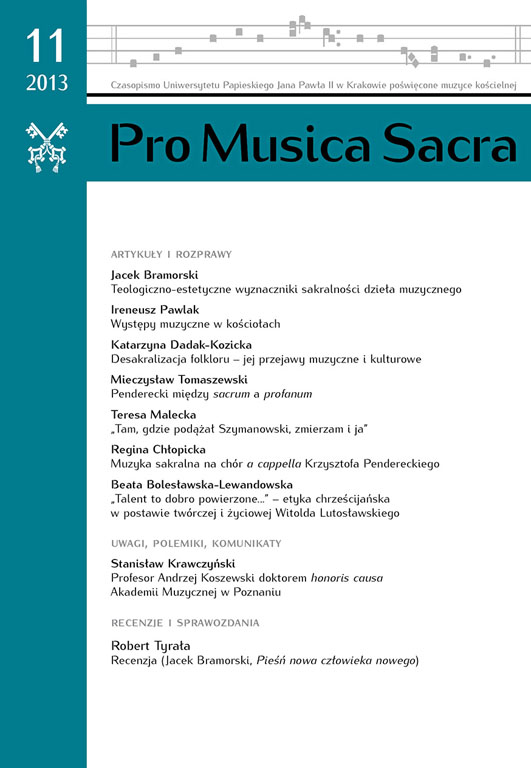The work of Jehan Titelouze and its place in developement of organ style
DOI:
https://doi.org/10.15633/pms.562Keywords:
French organ music, hymns, liturgical music, the Magnificat, pipe organ, polyphony of the Renaissance, Jehan TitelouzeAbstract
The organ work of Jehan Titelouze has considerable meaning in developement of organ music in France. His two books: Hymnes de l’Eglise pour toucher sur l’orgue, avec les fugues et recherches sur leur plain-chant (1623) and Le Magnificat, ou cantique de la Vierge pour toucher sur l’orgue, suivant les huit tons de l’Eglise (1626) are a great testimony of french organ music at the beginnig of XVIIth century. Titelouze is considered both a traditionalist and an innovator. His organ style is firmly rooted in the structures and the compositional techniques of the renaissance polyphony. The significant inspiration for Titelouze was a new invented type of organ. Composer in a conscious way used its technical and sound possibilities for create new stuctures with diligent counterpoint, organ ornamentation and the linear stucture.Downloads
Published
2013-12-30
Issue
Section
Artykuły i rozprawy
License
Copyright (c) 2013 Krzysztof Pawlisz

This work is licensed under a Creative Commons Attribution 4.0 International License.
Authors who publish with this journal agree to the following terms:
- Authors retain the copyright and full publishing rights without restrictions, and grant the journal right of first publication with the work simultaneously licensed under a Creative Commons Attribution 4.0 International License that allows others to share the work with an acknowledgement of the work's authorship and initial publication in this journal.
- Authors are able to enter into separate, additional contractual arrangements for the non-exclusive distribution of the journal's published version of the work (e.g., post it to an institutional repository or publish it in a book), with an acknowledgement of its initial publication in this journal.
- Authors are permitted and encouraged to post their work online (e.g., in institutional repositories or on their website) prior to and during the submission process, as it can lead to productive exchanges, as well as earlier and greater citation of published work (See The Effect of Open Access).

